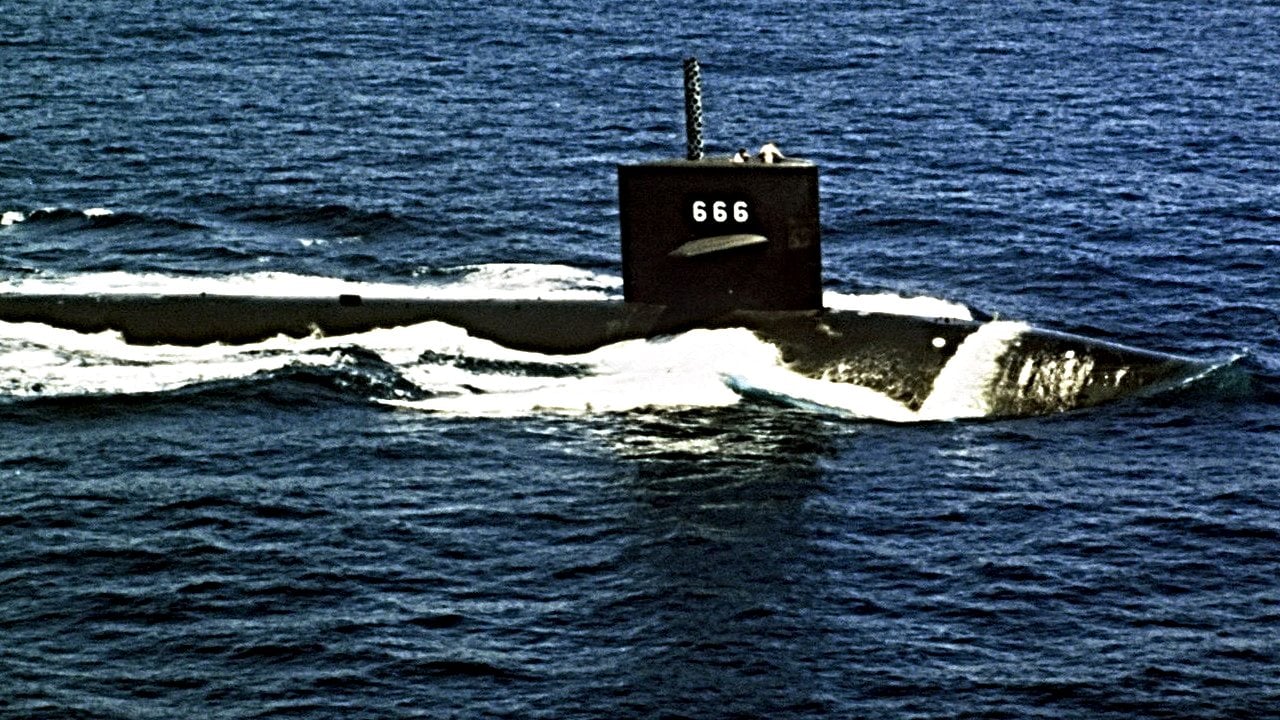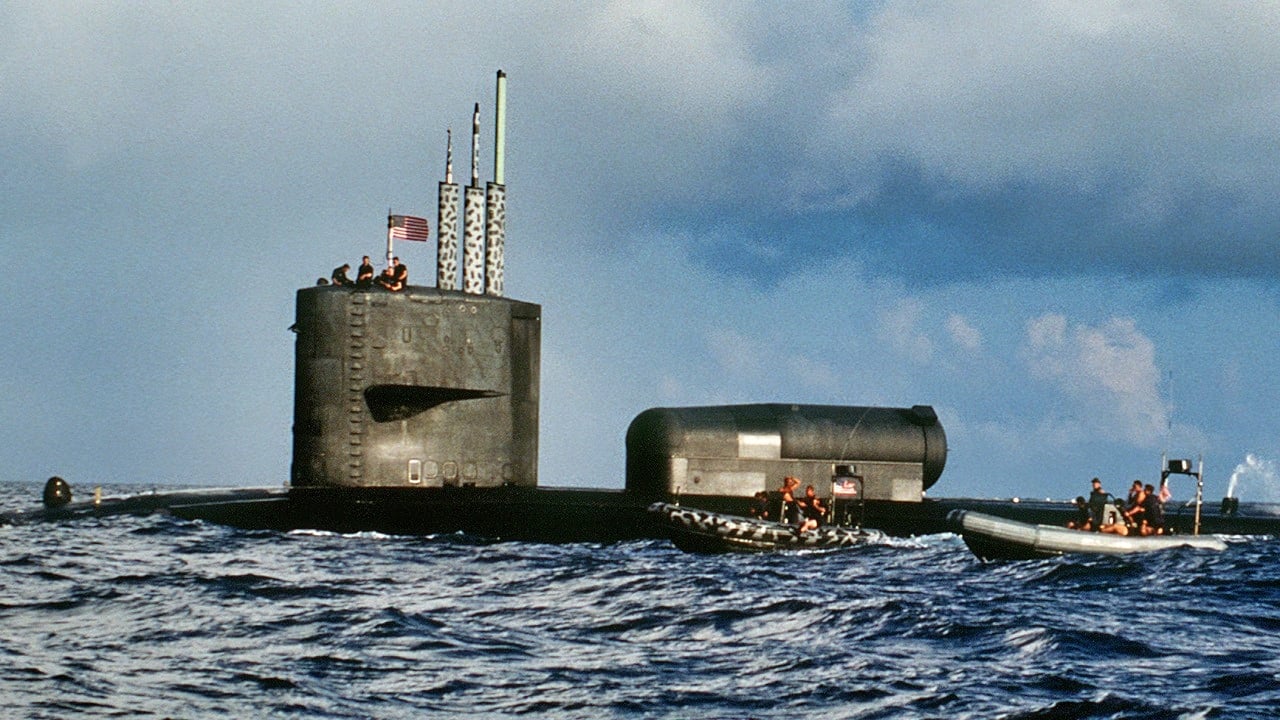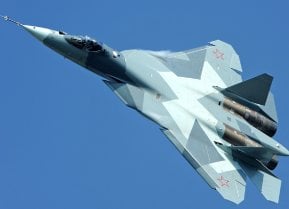USS Parche Spy Sub: 'Most Highly Decorated' Vessel Had 'Self Destruct Option'
The USS Parche II (SSN-683), a highly decorated Sturgeon-class submarine, played a crucial role in covert Cold War operations. It was, in fact the most highly decorated U.S. Navy vessel ever and was armed with explosives - a sort of self-destruct option - to ensure it was never captured by Russia or anyone else.
What You Need to Know: The USS Parche II (SSN-683), a highly decorated Sturgeon-class submarine, played a crucial role in covert Cold War operations. It was, in fact the most highly decorated U.S. Navy vessel ever and was armed with explosives - a sort of self-destruct option - to ensure it was never captured by Russia or anyone else.

-Most notably, it participated in Operation Ivy Bells, tapping a Soviet communication cable in the Sea of Okhotsk.
-The Parche retrieved fragments of Soviet missile tests and gathered intelligence from the undersea cable. However, in 1981, the operation was compromised when former NSA employee Ronald Pelton sold secrets to the Soviets. Despite the setback, Parche remained a key intelligence asset.
-Decommissioned in 2004, its sail is now preserved at Puget Sound Navy Museum in Bremerton, Washington.
USS Parche, a History
To Mother Nature and the marine biologists, particularly ichthyologists, the parche, Also known as the butterflyfish, are a group of coral reef-dwelling tropical marine fish, found mostly on the reefs of the Atlantic, Indian, and Pacific Oceans.
As is true of many other fish species, the parche has had at least one U.S. Navy (USN) submarine named for it.
Indeed, there have been two USN subs bearing the name USS Parche: the USS Parche I (SS-384/AGSS-384), a Balao-class submarine that served in WWII and was credited with sinking 31,696 tons of enemy shipping. The other was USS Parche II (SSN-683), a Sturgeon-class nuclear-powered fast attack submarine (SSN) that served from the heady days of the Cold War to the first few years of the Global War on Terror (GWOT). This article shall discuss the latter warship, with a particular focus on a rather intriguing incident in which this famous undersea boat was involved.

USS Parche Early History and Specifications
USS Parche II was built by Ingalls Shipbuilding in Pascagoula, Mississippi. She was ordered on June 25, 1968, laid down on December 10, 1970, launched on January 13, 1973, and commissioned on August 17, 2004. Her motto was Par Excellence.
The boat bore the following specifications:
Displacement: 4,300 tons fully laden
Hull length: 302 feet long initially; lengthened during the 1980s to 401 feet
Beam Width: thirty-one feet
Draft: twenty-eight feet
Propulsion: one S5W nuclear reactor and two steam turbines, which powered a single screw; 15,000 shaft horsepower
Max speed (fully submerged): twenty-five knots
Crew Complement: 112 commissioned officers and enlisted sailors initially; 179 crewmen after the 1980s hull lengthening
Test Depth: 1,300 feet
Armament: four 21-inch torpedo tubes
The Incident
The incident in question was officially designated Operation Ivy Bells and Parche’s role in it took place circa 1981. According to Lauren Dillon of Historic Mysteries, the impetus for Ivy Bells stemmed from the U.S. Intelligence Community (IC) learning of the existence of an undersea communication cable that connected the Soviet Pacific Fleet base in Petropavlovsk, which lies on the Kamchatka Peninsula, and the Fleet’s main headquarters in Vladivostok, a distance of nearly 1,400 miles.
The cable ran across the Sea of Okhotsk, which was part of Soviet territorial waters, and a no-go zone for foreign vessels.
Naturally, the IC wanted to tap into these comms but had to do so in a stealthy, surreptitious manner. So then, who better to undertake such a hush-hush mission than the so-called “Silent Service,” also known as the U.S. Navy’s submarine force? The USS Halibut (SSGN-587) was the first of these boats to sneak into the Sea of Okhotsk, doing so in October 1971.
Fast-forward to 1981, and, according to my National Interest colleague Harrison Kass, “during the top-secret operation, the Parche contributed to the successful tapping of a Soviet underwater military communication cable, which ran through the Sea of Ohkotsk. Tapping communication cables wasn’t the only secret operation for which the Parche was deployed; she was also used, regularly, to collect the fragments of Soviet missiles found on the seabed after test launches. The Parche collected significant amounts of Soviet fragments, allowing for examination and study…The sub even had explosives on board to destroy itself and evade capture from Russia if it ever came down to it…But in many respects, we’ll need to take the Navy’s word for the Parche being the most highly decorated vessel in the fleet’s history, because much of the Parche’s service history is still classified.”
More specifically, Parche was sent to retrieve a twenty-foot-long tapping device that Halibut had placed upon the Soviet common cable ten years prior at a depth of 400 ft. This retrieval operation became necessary after a National Security Agency (NSA) employee named Ronald Pelton sold the info on Operation Ivy Bells toSoviet Intelligence for a measly five thousand dollars in 1980.
Ms. Dillon picks up the story from there, “even though the Soviet Union now knew about the cable being tapped, they waited until 1981 to do anything about it. Then, unexpectedly, U.S. satellites detected Soviet ships, including a large salvage vessel, anchored directly on the site of the tap. The U.S. launched the USS Parche to retrieve the device, but they could not find it. It was assumed the Soviets had managed to get to the device before the U.S. could. In fact, the U.S. had no idea that Robert Pelton had sold information about Operation Ivy Bells until July 1985.”
Where Is She Now?
Sadly, Parch II is no more. After just over thirty years of official faithful service, using her commissioning date as the starting point of measurement, she was decommissioned on October 19, 2004 and stricken from the Naval Vessel Register (NVR) on July 18, 2005. Finally, she was scrapped with a completion date of November 30, 2006.
Thankfully, Parch II’s sail was preserved. It currently sits in a maritime park near Puget Sound Navy Museum in downtown Bremerton, Washington.
About the Author:
Christian D. Orr is a Senior Defense Editor for the National Security Journal (NSJ). He is a former Air Force Security Forces officer, Federal law enforcement officer, and private military contractor (with assignments worked in Iraq, the United Arab Emirates, Kosovo, Japan, Germany, and the Pentagon). Chris holds a B.A. in International Relations from the University of Southern California (USC) and an M.A. in Intelligence Studies (concentration in Terrorism Studies) from American Military University (AMU). He has also been published in The Daily Torch , The Journal of Intelligence and Cyber Security, and Simple Flying. Last but not least, he is a Companion of the Order of the Naval Order of the United States (NOUS).
Image Credit: Creative Commons and/or Shutterstock. All images are generic images of the Sturgeon-Class submarine.


